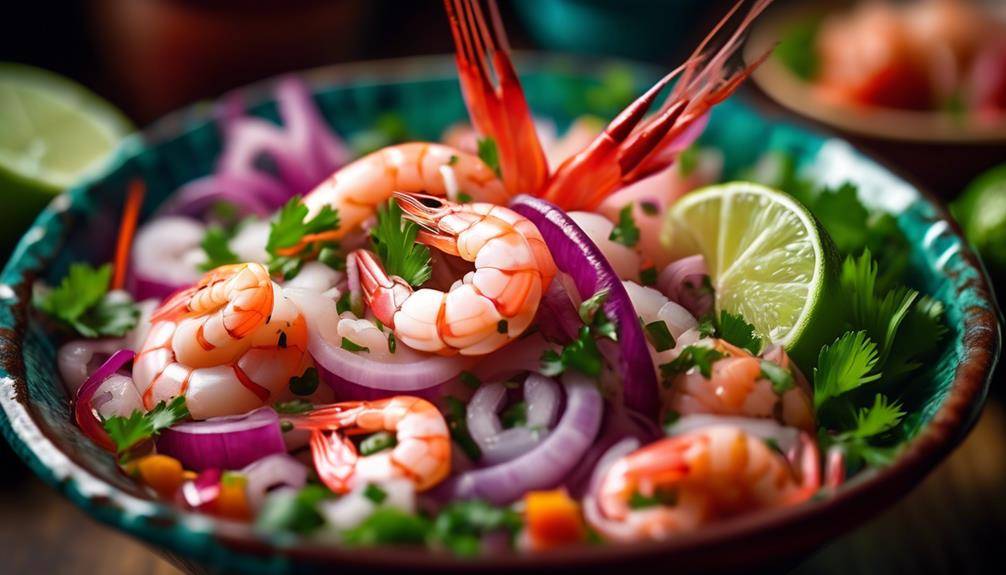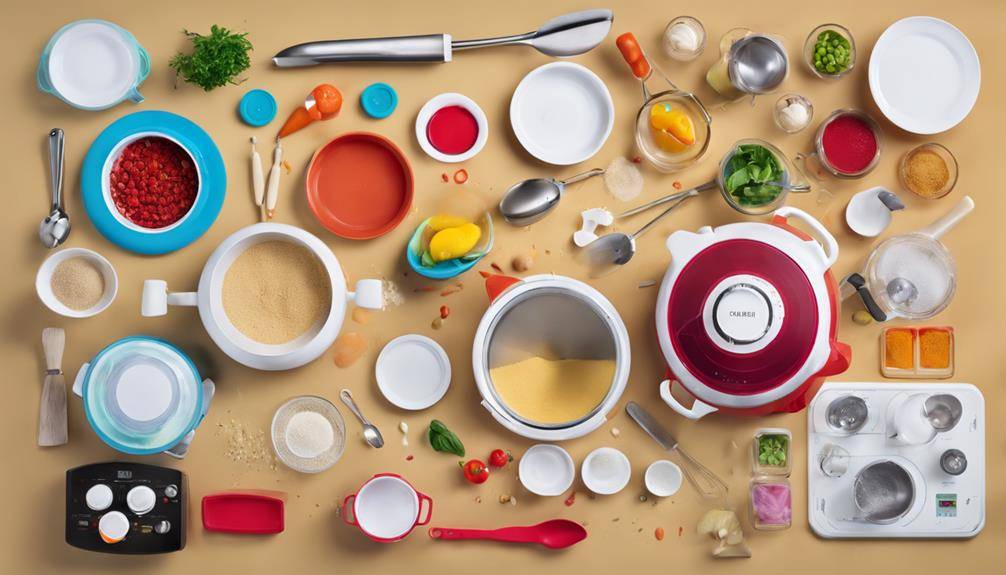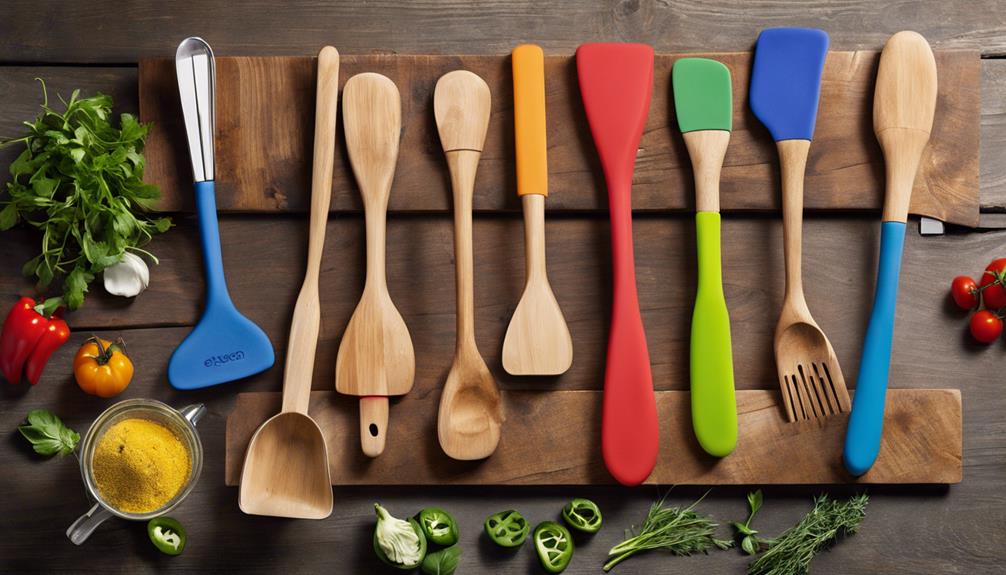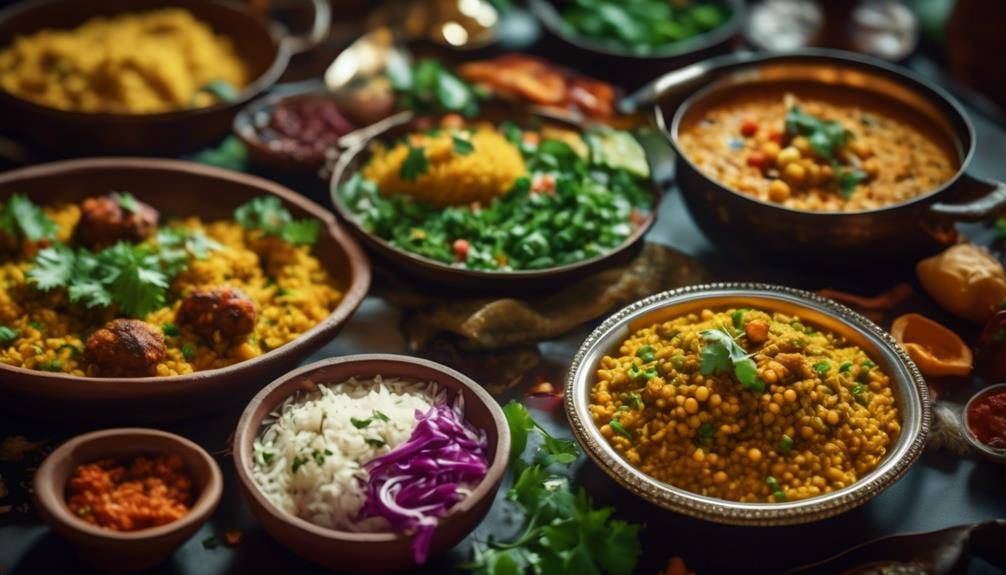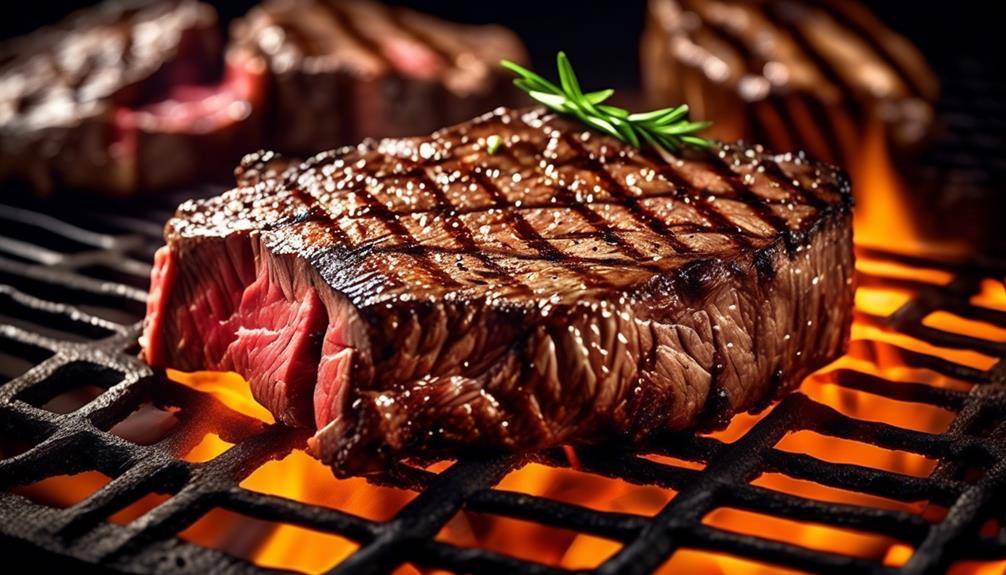How To: Beginner’s Guide to Cooking
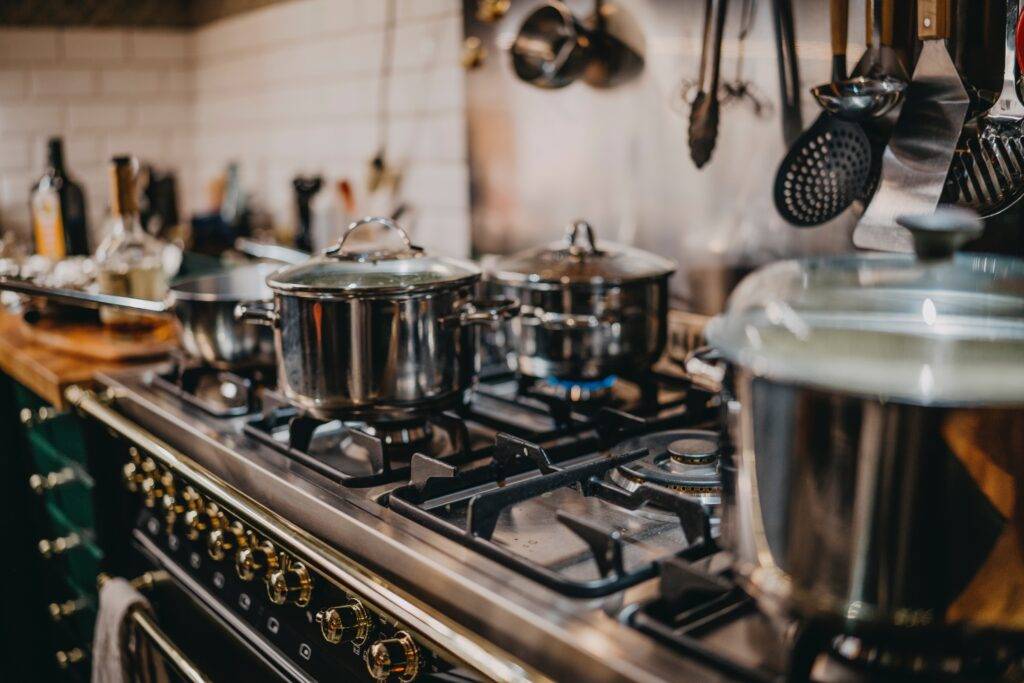
Mastering the Essentials: A Beginner’s Guide to Cooking
Are you a beginner in the kitchen, unsure of where to start? Introducing “Mastering the Essentials: A Beginner’s Guide to Cooking”! In this guide, you will discover the importance of basic knife skills, different cooking methods, and essential kitchen tools. Did you know that stocking your pantry with must-have ingredients can make meal preparation a breeze? We will also delve into the art of seasoning, baking basics, and secrets to perfectly roasting and grilling. Additionally, you’ll learn essential tips for meal planning and food prep, as well as how to troubleshoot common cooking mistakes. Get ready to embark on a culinary adventure and gain the confidence to create delicious meals from scratch!
Beginner’s Guide to Cooking;The Importance of Basic Knife Skills
To become a proficient cook, you must develop a solid foundation in knife skills. The first step in achieving this is understanding the importance of knife selection and maintenance. Choosing the right knife for the job is essential for achieving precision and efficiency in the kitchen.
A chef’s knife, with its versatile blade and comfortable grip, is a great starting point for any aspiring cook. It can handle a wide range of tasks, from chopping vegetables to slicing meat. However, it is important to remember that different knives serve different purposes. A paring knife, for example, is perfect for intricate tasks like peeling and trimming, while a serrated knife is best for slicing through crusty bread or delicate tomatoes without squashing them.
Once you have selected the appropriate knife, it is crucial to maintain its sharpness. A dull knife not only makes cutting more difficult, but it also increases the risk of accidents. Regular sharpening and honing are necessary to keep your knives in optimal condition. Honing should be done before each use to realign the blade and maintain its sharpness, while sharpening should be done periodically to remove any nicks or dullness.
Proper knife maintenance also includes safe storage. Investing in a knife block or magnetic strip will protect your knives from damage and prevent accidental cuts. Never leave knives loose in a drawer where they can collide with other utensils and become dull or chipped.
Understanding and Mastering Different Cooking Methods For Beginner’s
Now that you’ve mastered the basics of knife skills, it’s time to dive into the world of different cooking methods. Understanding and mastering these methods will take your cooking to the next level. You’ll learn how to control heat, retain moisture, and enhance flavors in your dishes. So let’s get started on this culinary journey and explore the art of cooking!
Beginner’s Guide to Cooking;Heat Control Techniques
Learn how to control heat effectively to master various cooking methods. Heat control techniques are crucial in achieving the desired results in your cooking. Whether you are grilling, braising, or sautéing, understanding how to adjust and regulate the heat will greatly impact the taste and texture of your dishes.
Different cooking methods require different heat levels and durations, so it is important to be familiar with alternative cooking methods. For example, when searing a steak, you need high heat to create a flavorful crust, but when simmering a sauce, low heat is necessary to allow the flavors to meld together slowly. By mastering heat control techniques, you will have the power to elevate your cooking skills and create delicious meals every time.
Beginner’s Guide to Cooking;Moisture Retention Methods
You can enhance the moisture retention in your dishes by implementing various cooking methods. Moisture retention techniques are essential in ensuring that your food remains juicy and tender. One effective method is marinating, which involves soaking your food in a flavorful liquid before cooking. Marinating not only adds flavor but also helps to retain moisture. The acidic components in the marinade help to break down proteins, making the meat more tender and allowing it to retain more moisture during cooking.
Another method is braising, which involves searing the food in a hot pan and then simmering it in a liquid. This slow-cooking method ensures that the food absorbs the liquid, resulting in moist and flavorful dishes. By implementing these moisture retention techniques, you can elevate the taste and texture of your dishes, making them more enjoyable to eat.
Beginner’s Guide to Cooking;Flavor-Enhancing Cooking Techniques
To further enhance the flavor of your dishes, explore different cooking methods that can elevate your culinary creations. One technique to try is flavor pairing, which involves combining ingredients that complement each other and create a harmonious taste experience. For example, the combination of sweet and savory flavors can create a balanced and complex dish.
Another method to enhance flavor is by harnessing the power of umami magic. Umami is the fifth taste, known for its savory and rich characteristics. You can achieve umami by using ingredients such as mushrooms, soy sauce, or Parmesan cheese. These ingredients add depth and complexity to your dishes, making them more flavorful and satisfying. By mastering different cooking methods and understanding flavor pairing and umami magic, you can take your culinary skills to the next level and create truly delicious meals.
Beginner’s Guide to Cooking;Essential Kitchen Tools and Equipment for Beginners
Equip yourself with the essential kitchen tools and equipment needed to embark on your cooking journey as a beginner. Having the right tools not only makes cooking easier but also more enjoyable. Here are four must-have items to stock your kitchen with:
- Chef’s Knife: A sharp, high-quality chef’s knife is a must-have for any beginner cook. It will be your go-to tool for chopping, slicing, and dicing ingredients. Look for a knife with a comfortable grip and a blade that is easy to maintain.
- Cutting Board: A sturdy and durable cutting board is essential for your kitchen. Opt for one made of wood or plastic, as they are easy to clean and won’t damage your knife blade. Make sure to have separate cutting boards for meat, poultry, and vegetables to avoid cross-contamination.
- Non-Stick Cookware: Investing in a good set of non-stick cookware will make your cooking experience much easier. Non-stick pans are great for cooking eggs, pancakes, and delicate foods that tend to stick. They also make cleanup a breeze.
- Mixing Bowls: Having a set of mixing bowls in various sizes is essential for any beginner cook. They are perfect for whisking eggs, mixing batters, and tossing salads. Look for bowls that are lightweight, microwave-safe, and easy to clean.
Beginner’s Guide to Cooking;Stocking Your Pantry: Must-Have Ingredients
Once you have equipped your kitchen with the essential tools and equipment, it’s time to stock your pantry with must-have ingredients. Pantry organization is essential for a smooth cooking experience, and having a well-stocked pantry ensures that you always have the ingredients you need on hand. In addition, choosing budget-friendly ingredients will help you save money while still creating delicious meals.
When it comes to pantry organization, it’s important to have a system in place. Start by categorizing your ingredients into groups such as grains, canned goods, spices, and baking essentials. This will make it easier to locate specific ingredients when you need them. Utilize clear containers or jars for items like flour, sugar, and pasta to keep them fresh and easily visible.
Beginner’s Guide to Cooking;Now, let’s talk about budget-friendly ingredients. These are staples that can be used in a variety of recipes and won’t break the bank. Rice, beans, and lentils are great options as they are versatile, filling, and inexpensive. Canned tomatoes, broth, and vegetables are also budget-friendly and can be used as a base for many dishes.
In addition, stocking up on herbs and spices is a great way to add flavor to your meals without spending a lot of money. Some essential spices to have in your pantry include salt, pepper, garlic powder, paprika, and oregano. These can transform a simple dish into something flavorful and delicious.
The Art of Seasoning: Enhancing Flavors in Your Dishes
When it comes to cooking, seasoning is the key to unlocking the full potential of your dishes. It’s all about finding the right balance of flavors that will make your taste buds sing. Don’t be afraid to experiment with different herbs, spices, and seasonings to create unique flavor profiles that will elevate your meals to the next level.
Importance of Balanced Seasoning
To achieve delicious flavors in your dishes, mastering the art of balanced seasoning is essential. Balancing flavors is the key to creating a harmonious taste that pleases the palate. Here are four important seasoning techniques to consider:
- Salt: Salt is a fundamental seasoning that enhances the natural flavors of ingredients. Use it sparingly and taste as you go to avoid over-salting your dish.
- Herbs and Spices: Experiment with different herbs and spices to add depth and complexity to your dishes. From aromatic basil to fiery cayenne pepper, these ingredients can transform a bland dish into a flavorful masterpiece.
- Acid: Adding a touch of acidity, such as lemon juice or vinegar, can brighten the flavors in your dishes. It balances out richness and adds a refreshing tang.
- Sweetness: Incorporating a hint of sweetness, like a touch of honey or a sprinkle of sugar, can help balance out savory or acidic flavors and create a well-rounded taste.
Beginner’s Guide to Cooking;Experimenting With Flavor Profiles
Experimenting with different flavor profiles allows you to unleash your creativity and take your seasoning skills to the next level. One way to do this is by exploring unique spices. By adding a pinch of cumin or a sprinkle of smoked paprika, you can transform a simple dish into a culinary masterpiece. Don’t be afraid to step outside your comfort zone and try spices from different cultures.
Another important aspect of flavor profiles is understanding the role of acidity. Acidity can enhance the flavors in your dishes by balancing out richness and adding brightness. A squeeze of lemon juice or a splash of vinegar can elevate the taste of a dish and make it more enjoyable. So, get adventurous with spices and embrace the power of acidity to create unforgettable flavors in your cooking.
Beginner’s Guide to Cooking;Mastering the Art of Boiling, Simmering, and Steaming
Start by understanding the basics of boiling, simmering, and steaming to enhance your cooking skills. These three techniques are essential in the kitchen and can elevate your dishes to new heights. Whether you’re boiling pasta, simmering a flavorful broth, or steaming vegetables, mastering these methods will give you more control over your cooking and allow you to create delicious and healthy meals.
Here are four key points to keep in mind when it comes to boiling, simmering, and steaming:
- Boiling Techniques:
- Bring a pot of water to a rolling boil before adding ingredients.
- Use a lid to retain heat and reduce the cooking time.
- Adjust the heat to maintain a steady boil throughout the cooking process.
- Add salt or other seasonings to infuse flavor into the ingredients.
- Simmering Methods:
- Start with a gentle simmer, which is when the liquid is barely bubbling.
- Keep the heat low to prevent the liquid from boiling vigorously.
- Simmering allows flavors to meld together and develops rich, complex tastes.
- Use a lid partially to allow for some evaporation while maintaining moisture.
- Steaming Techniques:
- Place a steamer basket or rack in a pot with a small amount of water.
- Bring the water to a boil, then add the food to the steamer basket.
- Cover the pot with a lid to trap the steam and cook the ingredients.
- Steaming preserves the nutrients in the food and creates a moist and tender result.
- Experiment and Adjust:
- Don’t be afraid to experiment with different ingredients and cooking times.
- Taste and adjust the seasoning as needed throughout the cooking process.
- Keep a close eye on the water level and replenish if necessary.
- Practice and experience will help you perfect your boiling, simmering, and steaming techniques.
Sauteing and Stir-Frying: Quick and Easy Cooking Techniques
Are you ready to take your cooking skills to the next level? Sauteing and stir-frying are two quick and easy techniques that will have you whipping up delicious meals in no time. By mastering heat control techniques, using essential cooking utensils, and experimenting with flavorful ingredient combinations, you’ll be able to create dishes that are not only tasty but also packed with vibrant flavors. So grab your skillet and get ready to saute and stir-fry your way to culinary success!
Beginner’s Guide to Cooking;Heat Control Techniques
Get ready to level up your cooking skills with sautéing and stir-frying – two quick and easy heat control techniques that will add a burst of flavor to your dishes. These techniques require precise temperature control and searing techniques to achieve the perfect texture and taste. Here’s how to master sautéing and stir-frying:
- Start with a hot pan: Preheat your pan over medium-high heat to ensure even cooking and prevent sticking.
- Use the right oil: Choose a high smoke point oil like vegetable or peanut oil for sautéing and stir-frying to prevent burning and maintain the desired flavor.
- Keep the ingredients moving: Continuously stir or toss the ingredients in the pan to evenly cook them and prevent sticking or burning.
- Cook in batches if necessary: If you’re cooking a large quantity of ingredients, it’s best to cook them in batches to maintain the desired texture and prevent overcrowding the pan.
With these techniques, you’ll be able to create delicious and flavorful dishes in no time. Happy cooking!
Essential Cooking Utensils
To successfully execute sautéing and stir-frying, you’ll need a few essential cooking utensils. Understanding utensil maintenance is crucial to ensure their longevity and effectiveness. When it comes to choosing the right cookware, there are a few key factors to consider. First, opt for a skillet or frying pan with a wide and flat bottom, as this allows for even heat distribution and faster cooking. Non-stick pans are ideal for sautéing and stir-frying, as they require less oil and make it easier to flip and toss ingredients.
Additionally, invest in a pair of long-handled tongs, which are perfect for flipping and stirring ingredients without damaging the pan’s surface. Lastly, a spatula or wooden spoon is essential for gently stirring and turning ingredients while keeping them intact. With these essential cooking utensils, you’ll be well-equipped to master the art of sautéing and stir-frying.
Flavorful Ingredient Combinations
For flavorful sautéing and stir-frying, you’ll need to combine the right ingredients in enticing combinations. Experimenting with unique flavor combinations is a great way to elevate your cooking and explore regional cuisines. Here are four ingredient combinations that are sure to impress:
- Soy sauce, garlic, ginger, and sesame oil: This classic Asian combination adds depth and umami to any stir-fry or sautéed dish.
- Cumin, coriander, turmeric, and chili powder: Perfect for Indian-inspired dishes, this combination creates a warm and aromatic flavor profile.
- Lemon zest, thyme, garlic, and olive oil: This Mediterranean-inspired combination adds brightness and freshness to any sautéed vegetable or protein.
- Balsamic vinegar, honey, mustard, and rosemary: Ideal for roasted or sautéed meats, this combination balances tanginess, sweetness, and herbaceousness.
Baking Basics: From Cookies to Cakes
Start by preheating your oven to the desired temperature. Baking is an essential skill in the world of cooking, and understanding the basics can open up a whole new world of delicious possibilities. Whether you’re a novice baker or just looking to expand your repertoire, mastering the art of baking cookies and cakes is a great place to start.
When it comes to baking techniques, there are a few key things to keep in mind. First, always accurately measure your ingredients. Baking is a science, and even the slightest variation can affect the outcome of your baked goods. Invest in a good set of measuring cups and spoons, and follow the recipe instructions closely.
Next, be sure to properly cream your butter and sugar when making cookie dough. This step is essential for achieving a light and fluffy texture. Start by beating the butter on its own until it’s creamy, then gradually add in the sugar. Beat the mixture until it’s light and fluffy, which usually takes about 3-5 minutes.
When it comes to cookie recipes, the possibilities are endless. From classic chocolate chip to indulgent double chocolate, there’s a cookie out there for everyone. Don’t be afraid to experiment with different flavors and add-ins, like nuts, dried fruit, or even a sprinkle of sea salt on top.
The Secrets to Perfectly Roasting and Grilling
Get ready to elevate your cooking skills by mastering the secrets to perfectly roasting and grilling. Whether you’re a beginner or a seasoned cook, these techniques will take your dishes to the next level. From perfectly searing meats to grilling vegetables, here are four key tips to help you achieve culinary excellence.
- Preheat your grill or oven: Before you start cooking, make sure your grill or oven is preheated to the recommended temperature. This ensures that your food cooks evenly and prevents it from sticking to the grill or baking sheet.
- Use the right seasonings: Seasonings are crucial for adding flavor to your dishes. For perfectly seared meats, marinating them beforehand will tenderize the meat and infuse it with delicious flavors. When grilling vegetables, toss them in olive oil, salt, and pepper to enhance their natural flavors.
- Control the heat: When roasting or grilling, it’s important to control the heat to avoid burning or undercooking your food. For roasting, start with a higher temperature to sear the outside of the meat and then lower the heat to allow the inside to cook evenly. When grilling, use different heat zones to control the level of doneness.
- Monitor the cooking time: Timing is key when it comes to roasting and grilling. Overcooking can result in dry and tough meats, while undercooking can lead to foodborne illnesses. Use a meat thermometer to check the internal temperature of your meats and follow cooking time guidelines for vegetables.
Beginner’s Guide to Cooking;Essential Tips for Meal Planning and Food Prep
Once you have mastered the secrets to perfectly roasting and grilling, it’s time to delve into the essential tips for meal planning and food prep that will streamline your cooking process and ensure delicious meals every time. Meal prep is a crucial step in any successful cooking endeavor. It involves planning and preparing your meals in advance, so you can save time and have ready-to-eat dishes throughout the week.
When it comes to meal prep, the key is to plan your meals ahead of time. Start by deciding what you want to eat for the week and make a list of the ingredients you will need. This will help you stay organized and avoid last-minute grocery store runs. Speaking of grocery shopping, it’s important to make a detailed shopping list and stick to it. This will prevent you from buying unnecessary items and save you money in the long run.
Once you have your ingredients, it’s time to start prepping. One helpful tip is to wash and chop your vegetables in advance. This will make it easier and quicker to cook your meals during the week. You can also pre-cook some ingredients, such as rice or chicken, to have them readily available. Additionally, portioning your meals into individual containers will make it convenient to grab and go when you’re busy.
Troubleshooting Common Cooking Mistakes and How to Fix Them
To troubleshoot common cooking mistakes and fix them, it’s important to have a good understanding of the techniques and skills involved in the culinary arts. Here are some helpful tips for troubleshooting common cooking mistakes:
- Troubleshooting overcooked meat:
- Use a meat thermometer: Invest in a reliable meat thermometer to ensure your meat is cooked to the right temperature. This will prevent overcooking and ensure your meat is juicy and tender.
- Rest the meat: After cooking, let your meat rest for a few minutes before slicing. This allows the juices to redistribute, resulting in a more flavorful and moist final product.
- Use a marinade: Marinating your meat can help tenderize it and add flavor. Acidic marinades, such as lemon juice or vinegar-based ones, can also help break down tough fibers.
- Slice against the grain: If your meat is still slightly overcooked, slicing it against the grain can help make it more tender.
- Fixing burnt sauces:
- Dilute the sauce: If your sauce is burnt, try adding a little bit of liquid, such as water, broth, or wine, to dilute the burnt flavor. Gradually add the liquid while stirring constantly until the burnt taste is less pronounced.
- Add sweetness: Sweet ingredients, such as a pinch of sugar, honey, or even a grated carrot, can help balance out the burnt flavors in a sauce.
- Strain the sauce: If the burnt flavor is too strong, strain the sauce through a fine mesh strainer to remove any burnt bits. This will help salvage the sauce and make it more palatable.
- Start over: If all else fails, it’s best to start over with a fresh batch of sauce. Learn from your mistake and adjust the cooking time or temperature to avoid burning it in the future.
Frequently Asked Questions
How Do I Properly Store Fresh Herbs and Spices?
To properly store fresh herbs and spices, start by drying herbs thoroughly. Store them in airtight containers away from heat, light, and moisture. For spices, maximize their shelf life by keeping them in a cool, dark place.
What Are Some Common Substitutions for Ingredients in Recipes?
When you’re cooking and don’t have all the ingredients, ingredient swaps can save the day! Get creative with recipe modifications by using alternatives like applesauce for butter or Greek yogurt for sour cream.
How Do I Know When Meat Is Cooked to the Proper Temperature?
To know when meat is cooked to the proper temperature, use a meat thermometer for accurate results. Additionally, pay attention to visual cues like color and texture. This ensures your meat is safe to eat and cooked to perfection.
What Are Some Tips for Preventing Food From Sticking to the Pan While Cooking?
To prevent food from sticking to the pan while cooking, there are a few tips you can follow. First, make sure your pan is properly preheated. Second, use a cooking oil with a high smoke point, like canola or avocado oil.
How Do I Properly Season Cast Iron Cookware?
To properly season cast iron cookware, start by preheating it on low heat. Rub a thin layer of oil all over the surface and let it bake in the oven. Regularly clean and maintain it to keep it in great condition.
Conclusion
Congratulations! You have now mastered the essentials of cooking. From sharpening your knife skills to understanding different cooking methods, stocking your pantry with must-have ingredients, and learning the art of seasoning, you are well on your way to becoming a culinary expert. With the knowledge of baking, roasting, grilling, meal planning, and troubleshooting common cooking mistakes, you can confidently create delicious and flavorful meals. So, put on your apron and get ready to impress your friends and family with your newfound skills in the kitchen!



